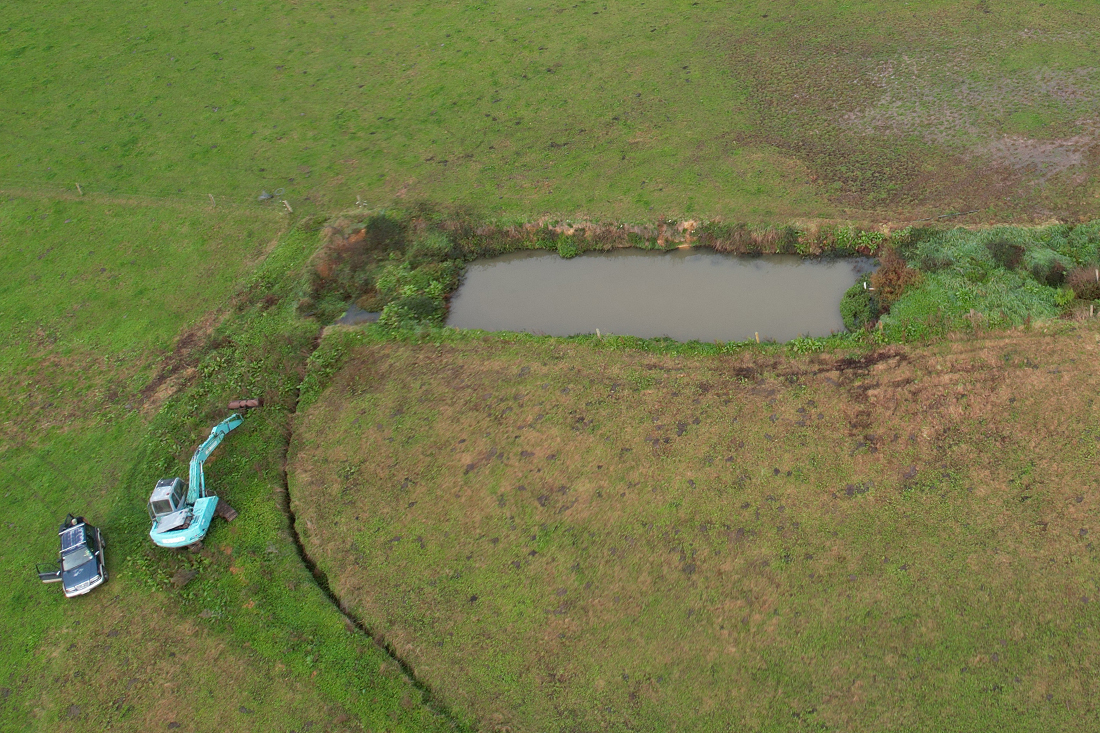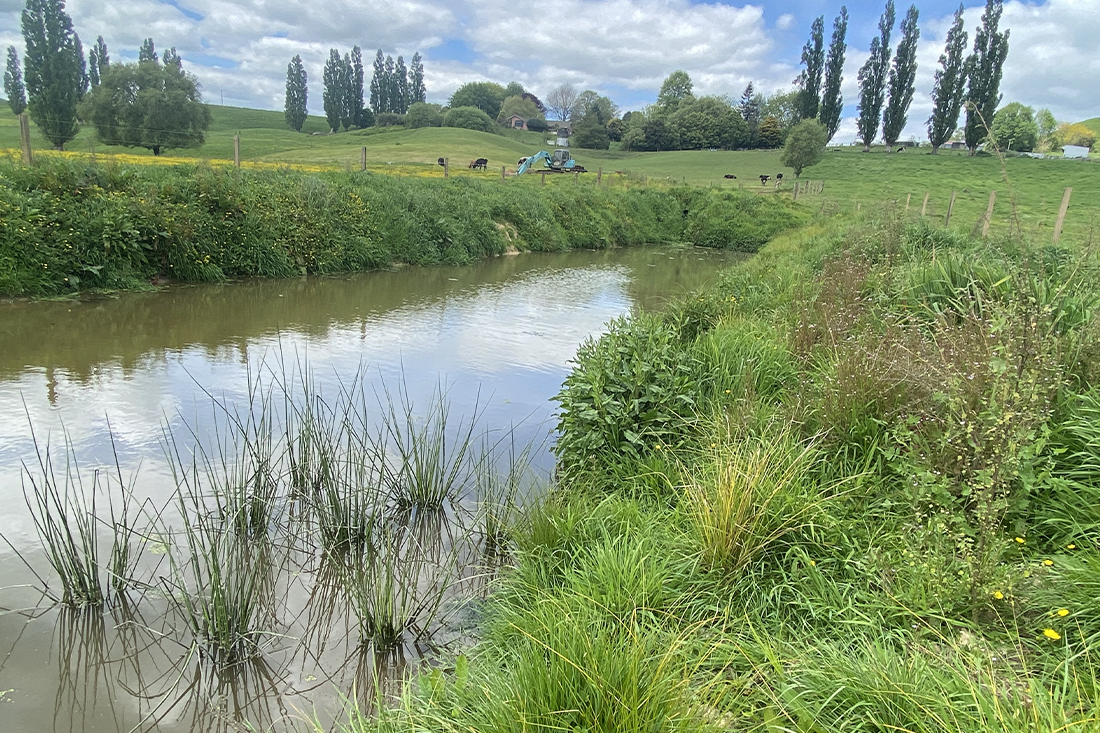A farm in King Country revitalises decommissioned effluent ponds, benefiting local native flora and fauna.
Wetlands used to be common place around New Zealand providing natural harbours for native flora and fauna. Most, however, have been drained and the land repurposed for urban and agricultural development. But change is in the air and the Co-op is a driving force.
Offering natural flood mitigation and contaminant filtration, wetlands can help farmers navigate the changing environment.
Co-op Sustainable Dairying Advisor Matthew Holwill has been working with NZ Landcare Trust Coordinator and national wetland expert Nathan Burkepile to help local farmers realise the hidden assets sitting on their farms – turning decommissioned effluent ponds into wetlands.
Matthew says he’s been looking at opportunities to help farmers use ‘dead land’ on their farms in ways that contribute to improving overall efficiency.
“For the past 20 years ago there has been a shift away from having the old two pond discharge effluent system (oxidation ponds) to the recycled system we have now. The old oxidation ponds would discharge into a nearby stream or drain – generally prime locations. Farmers have wondered what to do with the ponds,” Matthew says.
“Using my associations with our local catchment group, I was able to access some funding via the Access to Experts Fund Programme run by NZ Landcare Trust, Ministry for the Environment and Beca. Nathan Burkepile came and visited three farms here in the Waikato and we were able to get the ball rolling and start developing the wetlands. It’s a great example of different organisations all working together to make something happen.”
Perfect Conditions
Decommissioned effluent ponds offer all the perfect ingredients for a wetland, says Nathan Burkepile.
An ideal wetland set up has two ponds – one situated above the other with strategic planting within and around the pond. Water will flow into the top pond from critical source areas bringing with it sediment and contaminants. The plants and bacteria growing in the wetland pond soils absorb and break down the nutrients from the fertilisers, chemicals and effluent captured from the run off and plants trap sediment from flowing into the second pond and further downstream. Through the filtration process, water emerges from the wetlands into the main waterways clean.
“When we look at wetlands, we want a good solid clay basin to hold water and most of these effluent ponds have clay basins already built in. It’s just a matter of making it a shallow water habitat. If we’re looking at improving water quality, we want 70% of as emergent vegetation (200-300 millimetres of deep water) and then 30% deep water habitat,” he says.

